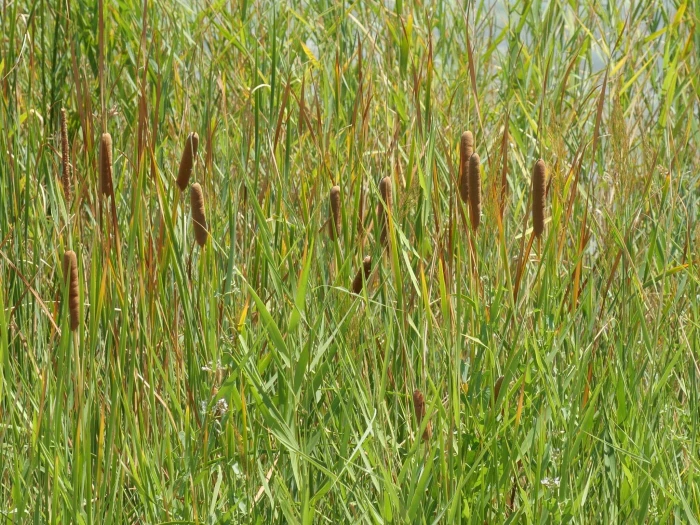Southern Cattail
(Typha domingensis)
Southern Cattail (Typha domingensis)
/
/

© Alexis
CC BY 4.0
Image By:
© Alexis
Recorded By:
Copyright:
CC BY 4.0
Copyright Notice:
Photo by: © Alexis | License Type: CC BY 4.0 | License URL: http://creativecommons.org/licenses/by/4.0/ | Uploader: alexis_orion | Publisher: iNaturalist |








Estimated Native Range
Climate Requirements for Rock Springs, Wyoming
| This Plant | Your Site | Plant Suitability for Your Location | ||
|---|---|---|---|---|
| • Precipitation | 0" - 182" | 8" | Your precipitation may be insufficient for this plant. Irrigate N" / year. | Irrigate N" / year |
| • High Temp. | 61°F - 114°F | 84°F | Your summer temperatures are normal for this plant. | Excellent |
| • Low Temp. | -15°F - 76°F | 8°F | Your winter temperatures are normal for this plant | Excellent |
This plant should grow well at your location with about N inches per year (Y minutes per month) of irrigation.
Summary
Typha domingensis, commonly known as Southern Cattail, is a perennial herbaceous plant native to freshwater and brackish wetlands, marshes, and the edges of ponds and lakes in temperate and tropical regions worldwide. It typically grows 7 to 8 feet tall and forms dense stands with long, narrow leaves and distinctive brown cylindrical flower spikes. The flowers bloom in summer and are not particularly showy, but the seed heads are quite noticeable and persist into winter. Southern Cattail is valued for its ability to filter pollutants and heavy metals from water, making it useful in constructed wetlands for wastewater treatment.
In cultivation, Typha domingensis is used for its ecological benefits, particularly in water gardens and naturalized areas where its aggressive growth is not a concern. It requires full sun to part shade and grows best in shallow, standing water or saturated soil. While it is low-maintenance, it can spread vigorously by rhizomes and seeds, potentially becoming invasive outside its native range. It is also used in traditional medicine for wound healing and has been investigated for its phytoremediation potential. Gardeners should be cautious about planting it in areas where it could spread into natural waterways.CC BY-SA 4.0
In cultivation, Typha domingensis is used for its ecological benefits, particularly in water gardens and naturalized areas where its aggressive growth is not a concern. It requires full sun to part shade and grows best in shallow, standing water or saturated soil. While it is low-maintenance, it can spread vigorously by rhizomes and seeds, potentially becoming invasive outside its native range. It is also used in traditional medicine for wound healing and has been investigated for its phytoremediation potential. Gardeners should be cautious about planting it in areas where it could spread into natural waterways.CC BY-SA 4.0
Plant Description
- Plant Type: Herb
- Height: 5-10 feet
- Width: 3-6 feet
- Growth Rate: Moderate, Rapid
- Flower Color: Brown, Green
- Flowering Season: Spring, Summer, Fall
- Leaf Retention: Deciduous
Growth Requirements
- Sun: Full Sun
- Water: High, Aquatic
- Drainage: Standing
Common Uses
Erosion Control, Low Maintenance, Water Garden
Natural Habitat
Freshwater and brackish wetlands, marshes, and the edges of ponds and lakes in temperate and tropical regions worldwide
Other Names
Common Names: Bulrush, Cattail, Lesser Reed-Mace, Narrow-Leaf Cumbungi, Totora, Cumbungi
Scientific Names: Typha domingensis, Typha abyssinica, Typha abyssinica, Typha aequalis, Typha aethiopica, Typha americana, Typha americana, Typha angustata, Typha angustata
GBIF Accepted Name: Typha domingensis